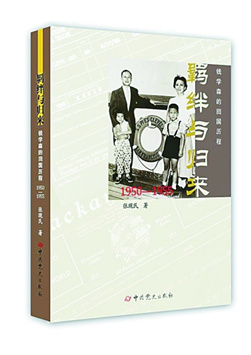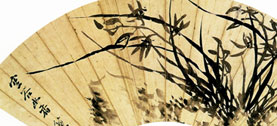Hsue-shen Tsien’s arduous journey back home
Author : QIAN XUEMIN Source : Chinese Social Sciences Today 2019-12-03

Hsue-shen Tsien Back Home from the United States (1950–1955)
Hsue-shen Tsien, also know as Qian Xuesen, was a world-famous aerodynamicist. During his early adulthood, he worked as a professor for the California Institute of Technology (CIT) and the Massachusetts Institute of Technology (MIT). After returning to China in 1955, he made great contributions to China’s national defense and the development of missiles, rockets and satellites.
With data collected from the National Archives of the United States, the US Presidential Library, the archives of CIT and MIT, and many other archives, Zhang Xianmin, executive deputy director of the Qian Xuesen Research Center at Shanhai Jiao Tong University, presented us the history of Tsien’s arduous journey back home in a more objective and detailed way, which further reflects his brilliance and patriotism.
In Hsue-shen Tsien Back Home from the United States (1950–1955), Zhang reveals that Tsien obtained a license to conduct military secret research in the United States in December 1942. US senior officers at the time, including the US Army Air Force commander Henry Arnold, signed orders of commendation to praise Tsien’s contribution to American aeronautics.
However, the then president Harry Truman signed the Executive Order No. 9835 in 1947, which initiated an investigation into loyalty to the country nationwide, and McCarthyism in the United States began to prevail.
As a result, the US government found that a CIT assistant researcher recommended by Tsien was of Russian ancestry and a member of the American Communist Party in Pasadena, with close ties to Tsien. The US government suspected that Tsien might be a member of the Communist Party of the United States, a spy disloyal to the United States. On May 18, 1950, a special meeting was held to discuss the problem. On June 16, Tsien received a notice about the revocation of his confidential research license. Tsien felt that his initial popular status no longer existed, so he resigned and decided to return to China immediately.
However, for fear that Tsien might have served the Communist Party of China after he left the US continent, Dan Kimball, the then deputy secretary of the US Navy immediately informed the US Department of Justice that Tsien shouldn’t be allowed to leave America. In this way, Tsien’s plan to return was halted.
After four hearings on this issue, the Immigration and Naturalization Service finally decided to “deport” Tsien. Meanwhile, the deportation required Tsien to wait for further instructions.
The author believes that before the China-US ambassadorial-level talk in 1955, the United States was striving to take advantage of the talks to reclaim prisoners of war captured in the Korean War. Furthermore, the misjudgment by then US president Dwight Eisenhower eventually meant that Tsien was allowed to return to China. He believed that after five years of detention, the information Tsien had was no longer as valuable as before. Therefore, in mid-June 1955, the US finally approved Tsien’s application.
(Edited by YANG LANLAN)
Interview with Wang Gungwu on significance of studying overseas Chinese
Wang Gungwu is a distinguished Australian historian who studies overseas Chinese. He currently works at the Faculty o...
-
On the rat/mouse of the zodiac
2020-02-20
-
Regional development calls for Huaihe culture’s soft power
2020-01-10
-
Archaeological discoveries unveil Maritime Silk Road
2020-01-06
-
China’s industrial art printing
2019-12-10
-
Yue-Gan Ancient Road: A journey into Hakka history
2019-05-13
-
The Lantern Festival in Dream of the Red Chamber
2019-02-18














 2011-2013 by www.cssn.cn. All Rights Reserved
2011-2013 by www.cssn.cn. All Rights Reserved